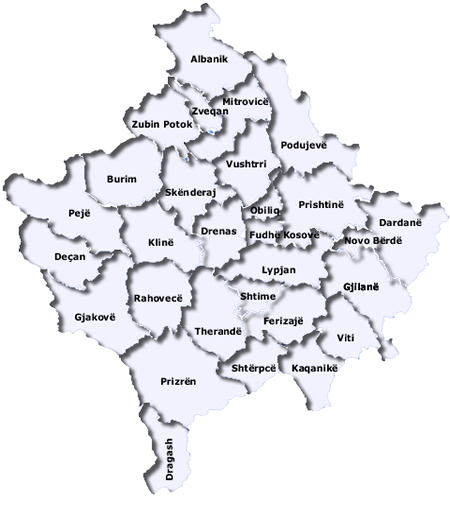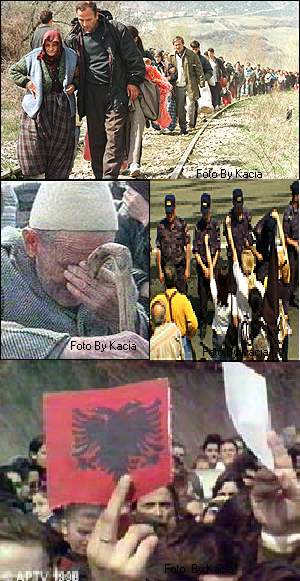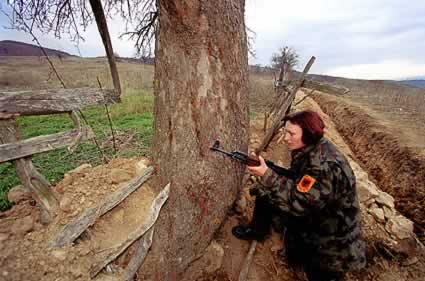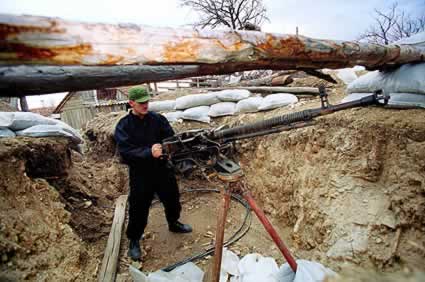|




Edhe ktu jan protestat e viti
1989 nje der protestat ma te kqija
qe kan qen ndonjehere...
After the revocation of
Kosova's autonomy, the Serbian authorities closed schools in
the Albanian language, massively dismissed Albanians from
state-owned enterprises, and suspended Kosova's legal
parliament and government. Serbia instituted a regime of
systematic oppression of the Albanian population in Kosova,
and flagrant violations of basic rights of Albanians occured
frequently.
Initially the Albanians responded to the repression with
peaceful and passive resistance. In 1992 the people of
Kosova held free elections in which they chose their
leadership, expressed their determination for the
independence of Kosova in the 1991 referendum, and in the
same year the Kosovar parliament declared the independence
of Kosova. They formed a parallel government, found means of
continuing Albanian-language education outside of occupied
premises and providing health care (most Albanian doctors
were dismissed from state-owned hospitals by Serb installed
authorities).
In early 1998 the Serbian government began a crackdown
against the Kosova Liberation Army (UŠā”K), a guerilla
movement which emerged after it became apparent that the
peaceful approach was ineffective in face of the brutal
regime of Milosevic. After 1998 Serbian security forces
conducted a scorched earth policy in Kosova, raising
villages to the ground, creating an exodus of over one
million refugees and internally displaced persons, and
committed horrific atrocities against unarmed civilians,
including women and children.
The NATO bombing campaign, which began in March 1999 after
Serbia's refusal to sign a peace accord for the settlement
of the conflict in Kosova, lasted until June 1999 when the
Yugoslav president Slobodan Milosevic capitulated and agreed
to withdraw all Serbian security forces from Kosova. United
Nations Security Council resolution 1244 established a
United Nations civilian administration in Kosova (known as
the United Nations Mission in Kosova; UNMIK) and allowed a
NATO-led peacekeeping force to enter Kosova to ensure
security.
The war in Kosova had created over one million refugees and
internally displaced persons, left over 300,000 people
without shelter, an estimated 10,000 dead, and mass graves
containing bodies of up to one hundred civilians, including
women and children, who have been summarily executed.
The Kosovars, UNMIK, NATO and the international community
are now making efforts to rebuild Kosova, revitalize its
economy, establish democratic institutions of
self-government, and heal the scars of war. (For more
up-to-date information on the deveopments in Kosova please
check out the Kosova Crisis Center.)
Geographic Features
Kosova borders Serbia in the north and northeast, Montenegro
in the northwest, Albania in the west and the FYR of
Macedonia in the south. It covers a total of 10,887 squared
kilometers and its population is around two million, 90
percent of which are ethnic Albanian. |
|